Running a restaurant, cafe or other food business means that you must keep your dishwashing equipment in top shape. Having a reliable and clean commercial dishwasher is essential for efficient and hygienic operations. To ensure that your commercial dishwasher stays in working order, It is important to clean it regularly. We will discuss the best methods for how to clean a commercial dishwasher, So you can keep your kitchen running smoothly!
What Is A Commercial Dishwasher?
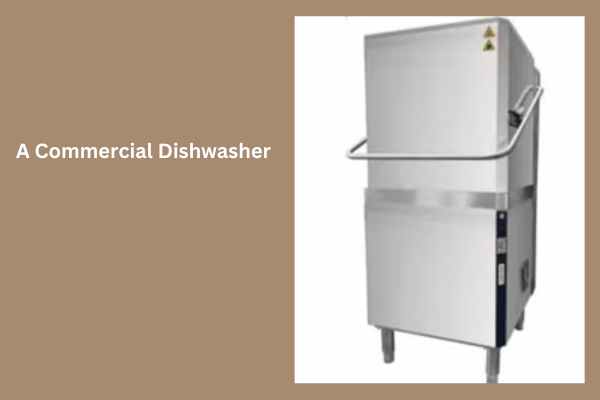
A commercial dishwasher is A specialized appliance designed to quickly and efficiently wash large quantities of dishes, cutlery, glassware, And other items used in the food service industry. This type of dishwasher is typically much larger than A residential dishwasher and can accommodate multiple racks of dishes at once. Commercial dishwashers are often powered by either an electric or gas-powered heating element and feature adjustable water pressure and temperatures for maximum cleaning power. Additionally, Many commercial dishwashers come with built-in sanitizing systems that help to ensure that All dishes are completely free of bacteria and germs.
Commercial dishwashers are essential in any restaurant or other food service business As they allow staff to quickly clean large amounts of dishes without having to scrub each item manually. They also save time by allowing staff to load a rack of dirty dishes into the machine and come back later when the job is done.
Why It’s Important To Clean A Commercial Dishwasher
Cleaning a commercial dishwasher is essential for any business that uses one. Not only does it help to maintain the cleanliness of dishes, But it also helps to extend the life of the machine and reduce costly repairs in the future.
Regularly cleaning your commercial dishwasher helps to remove any food particles or debris that may have been left behind after washing. This helps to keep dishes sanitary and free from bacteria or other contaminants, which is important for any food-related business. Additionally, Regularly cleaning your machine can help prevent the build-up of dirt and grime on the internal components, Which can lead to breakdowns and costly repairs if not taken care of properly.
Keeping your commercial dishwashers clean is an important part of overall kitchen hygiene and safety. A dirty machine can be a breeding ground for bacteria, Which can cause serious health issues if not addressed quickly.
The Steps To Clean A Commercial Dishwasher
1. Remove Food Residue
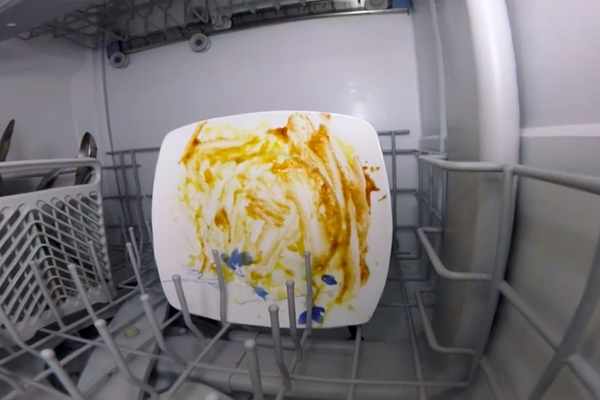
One of the biggest challenges in keeping A commercial dishwasher clean is removing food residue from the machine’s interior. Over time, food residue can build up on the walls, racks, And other parts of the dishwasher. This can cause foul odors, mold growth, and even clog filters or drain lines.
To remove food residue from a commercial dishwasher, start by emptying out any leftover water and debris from the machine. Next, use a scraper or brush to remove any visible food particles from the interior surfaces of the dishwasher. After this step has been completed thoroughly rinse out all components of your dishwashing machine including spray arms, baskets or racks with hot water before placing them back inside your appliance.
2. Turning Off The Power To The Dishwasher
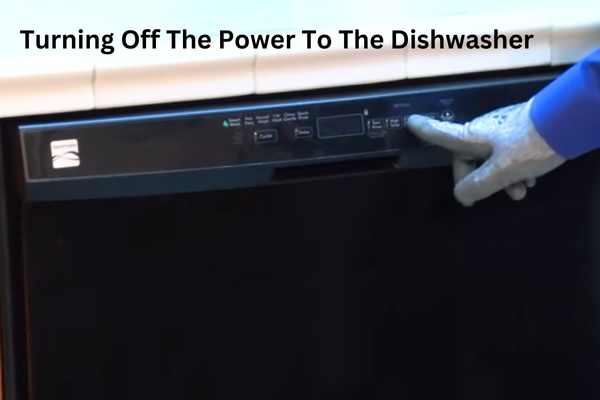
Turning off the power to the dishwasher is An essential step when it comes to cleaning commercial dishwashers. This process ensures that you are not at risk of electrical shock or damage. It is recommended that You always follow the manufacturer’s instructions on how to turn off the power before attempting Any maintenance work.
The first step in turning off power to a commercial dishwasher is to locate the circuit breaker box. Once you have located it, Open the panel and look for the switch labeled “dishwasher.” Turn this switch off by flipping it down into the “off” position. If your dishwasher has A plug-in cord, simply unplug it from its outlet or extension cord.
If you are unsure about how to turn off the power to your commercial dishwashers, Consult with A professional technician who can guide you through this process safely and effectively.
3. Use The Correct Detergent
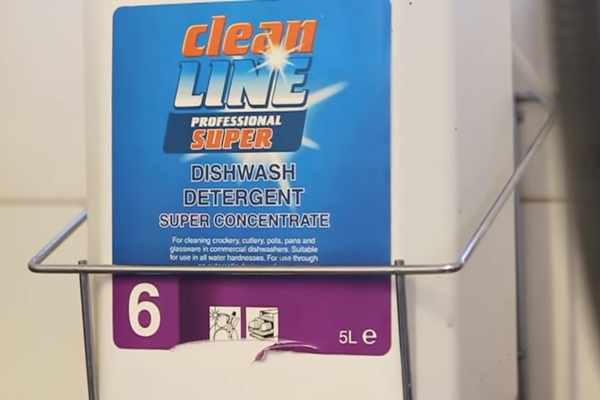
Using the right detergent ensures that your machine cleans effectively. Different detergents are designed for different types of water hardness levels and soil loads. If you’re not sure which detergent is right for your specific needs, Consult with a professional or refer to your machine’s user manual. Secondly, using an incorrect cleaning agent can damage the interior of the machine over time. The wrong cleaner can cause erosion or corrosion on parts like gaskets or wash arms leading to leaks or other costly repairs.
4. Wash Inside

You’ll want to clear out any dishes or debris from inside the dishwasher. Once done, Take a closer look At the interior walls and remove any visible grime or stains with a soft-bristled brush and some cleaning solution. Additionally, Be sure to clean out any filters or screens present in your unit as these can become clogged with food particles over time.
Another important step when washing inside your commercial dishwashers is descaling it. Mineral buildup from hard water can accumulate in the heating elements and pumps of your machine over time, leading to poor performance and even breakdowns.
5. Cleaning The Interior Of The Dishwasher

A dirty interior can lead to problems such as clogged spray arms, a buildup of minerals or debris, and foul odors emanating from the machine. To keep your dishwasher running efficiently, It’s important to take time every few weeks to thoroughly clean the interior.
Remove All racks and trays from the dishwasher And inspect them for any signs of damage or corrosion. Use a soft brush or sponge with warm soapy water to clean each rack individually before rinsing them thoroughly with clean water. Next, use a damp cloth or sponge to wipe down the interior walls of the machine including nozzles, jets, and crevices where dirt may accumulate.
6. Cleaning The Exterior Of The Dishwasher
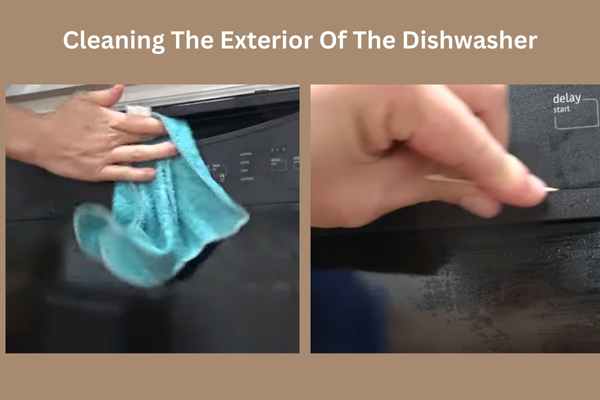
Cleaning the exterior of a commercial dishwasher, You need to begin by unplugging it from the power source. Then, remove all items placed on or around the machine. Using warm soapy water and a soft cloth or sponge, gently wipe down all surfaces of your dishwasher including handles, knobs, and buttons until they are free from grease and grime buildup. For stubborn stains or marks that won’t come off with soap and water alone, use a mild abrasive cleaner like baking soda mixed with water to create a paste-like consistency.
7. Run a Cleaning Cycle
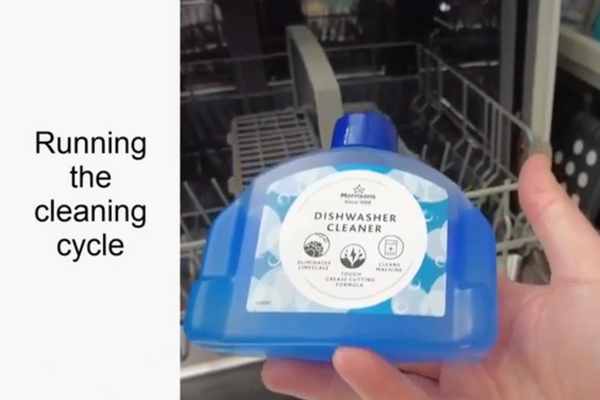
Running a cleaning cycle involves removing any debris or food particles that may have accumulated inside the dishwasher. It also helps to remove any mineral buildup that can cause damage to the machine over time. A cleaning cycle is especially important after busy periods when the machine has been used extensively.
To run a cleaning cycle, Start by emptying the dishwasher and removing any large pieces of debris from the interior. Next, add a commercial-grade cleaning solution to the machine according to manufacturer instructions. Finally, Run the dishwasher through A full cycle with hot water to ensure all surfaces are thoroughly cleaned and sanitized.
8. Removing Racks And Other Removable Parts

Start by turning off the dishwasher And unplugging it from the power source. Then remove all removable parts such as racks, wash arms, filters, and drain screens. Soak them in hot soapy water or A cleaning solution recommended by your manufacturer for at least 15-20 minutes before scrubbing with A soft brush or sponge to remove any grease or debris.
Rinse each part thoroughly with warm water And let them air dry completely before placing them back inside the dishwasher. Remember not to force any of the parts back into place as they may become damaged or cause damage elsewhere in the machine.
9. Cleaning Interior Walls And Floors
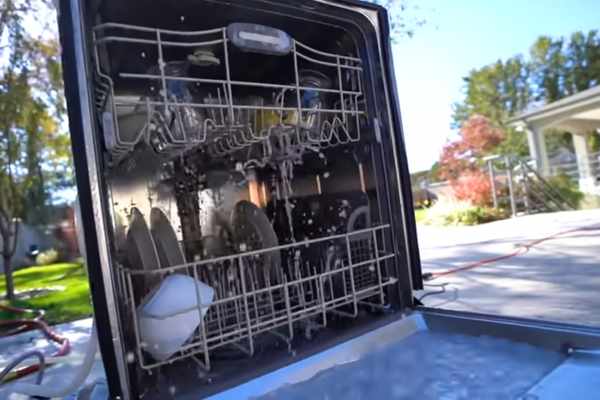
Cleaning interior walls and floors is an essential part of maintaining a clean and safe environment in any facility. From hospitals to restaurants, It’s important to ensure that all surfaces are free from dirt, grime, And bacteria. One area that often gets overlooked is the commercial dishwashers. While it’s designed to clean dishes, It also needs regular maintenance to keep it functioning at its best.
To clean a commercial dishwasher, start by emptying out any leftover food or debris from the machine. Remove any removable parts such as racks or utensil holders and wash them with warm soapy water. Use a soft-bristled brush to scrub away any built-up residue on the walls And floor of the machine before rinsing everything thoroughly with hot water.
10. Cleaning Spray Arms

Cleaning the spray arms of a commercial dishwasher is an essential part of maintaining and optimizing its performance. Over time, food debris, mineral build-up, and other sediments can accumulate inside the spray arms, affecting their efficiency and causing them to clog. This can lead to poor cleaning results and ultimately damage your equipment. To avoid this, it’s important to clean your spray arms regularly.
The first step in cleaning your dishwasher’s spray arms is to remove them from the machine carefully. Depending on your dishwasher model, You may need a screwdriver or pliers to unscrew or unclip them. Once removed, soak the spray arms in warm soapy water for at least 30 minutes to loosen up any dirt particles and debris inside them. You can also use A toothbrush or pipe cleaner to scrub away any remaining residue before washing thoroughly with clean water.
11. Cleaning Filters

clean a commercial dishwasher filter, first shut off power to the equipment and allow it to cool down. Remove any excess debris or food particles by hand, then remove the filter screen or basket from its housing. Scrub it thoroughly with a soft brush or cloth under running water until all debris is removed. If there are any stubborn stains or buildup on the filter surface, soak it in warm water mixed with a cleaning agent before scrubbing again.
12. Clean The Exterior

cleaning your commercial dishwasher’s exterior, begin by unplugging it from its power source or turning off its electrical circuit breaker. Use a mixture of warm water and mild soap to wipe down all accessible surfaces with a clean cloth or sponge. Be sure to pay special attention to areas where grease tends to accumulate such as around vents or near exhaust fans. For tough stains or built-up dirt, you may need to use a stronger cleaner specifically designed for industrial kitchen equipment.
13. Cleaning The Door
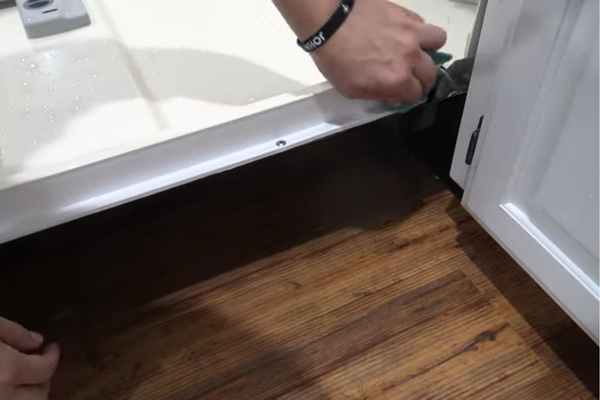
Cleaning the door of a commercial dishwasher is an essential routine maintenance task that should perform regularly. A clean and well-maintained dishwasher can help prevent cross-contamination, extend the lifespan of the appliance, and ensure sparkling clean dishes every time. In this article, we will discuss easy steps to follow to properly clean commercial dishwashers.
Make sure that the machine is turned off And unplugged before starting the cleaning process. Remove any large debris or food particles from the interior of the machine using a soft-bristled brush or sponge. Next, Mix warm water with A mild detergent in a bucket or sink and use it to wipe down all surfaces on both sides of the door using A soft cloth or sponge.
Don’t forget to also clean around the edges of the door gasket thoroughly as this area often gets overlooked during regular cleaning routines.
14. Remove And Clean Screens And Baskets

A screen or basket in a commercial dishwasher serves as a filter to catch food scraps and debris during the wash cycle. Over time, this buildup can cause blockages and reduce the effectiveness of your dishwashers. Remove and clean the screen. Start by turning off the power to the machine and opening up the front panel. Locate the screen or basket, then carefully remove it from its housing.
Once you have removed the screen or basket. Use hot water and soap to scrub away any residue that has accumulated on it. For tougher buildups, consider using a chemical cleaner specifically designed for dishwashers.
15. Cleaning The Control Panel

Cleaning the control panel of your commercial dishwashers is an essential task that should not be overlooked. It may seem like a small detail, But neglecting to keep it clean can result in malfunctioning buttons and switches, Which can ultimately lead to costly repairs or even the replacement of the entire unit. Additionally, a dirty control panel can harbor harmful bacteria and germs that can contaminate your dishes and food items.
To clean a commercial dishwasher’s control panel effectively, start by turning off the power supply to the unit. Next, use a soft cloth or sponge with warm water and mild detergent to wipe down the surface of the control panel thoroughly. Be sure to avoid using abrasive cleaners or harsh chemicals as they can damage the finish on your machine’s metal components.
Pay extra attention to any crevices between buttons and knobs where grime tends to accumulate over time.
16. Cleaning The Drain
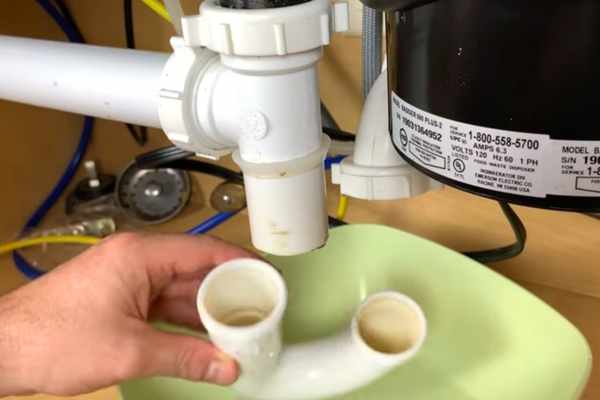
Cleaning a commercial dishwasher drain is crucial for the maintenance of the equipment’s efficiency and longevity. Blocked drains can cause water overflow, damage to the machine, and ultimately lead to costly repairs or replacement. Here are some practical tips for cleaning your commercial dishwasher’s drain efficiently.
Turn off the power source And disconnect the machine from its power supply. Remove any leftover food debris or visible clogs from inside the dishwashers by hand or using a strainer. Then, disassemble the drain components carefully by unscrewing them, And checking for any blockages in each part separately. You may use vinegar or baking soda with warm water as a natural solution to break down grease and grime build-up accumulated over time.
17. Cleaning With A Sanitising Solution

Cleaning and sanitizing your commercial dishwashers is essential in maintaining the quality of your dishes and ensuring A healthy environment for your customers. It’s important to clean your dishwasher regularly to prevent any build-up of dirt, grease, Or grime. A sanitizing solution can help you achieve A deep clean that will leave your dishwashers spotless.
Empty the dishwasher and remove any debris such As food particles or utensils. Then, prepare the cleaning solution according to the manufacturer’s instructions. Make sure you have protective gear such as gloves and goggles before you start cleaning. Begin by wiping down the interior of the machine with a clean cloth dipped in the solution; pay attention to areas that are harder to reach such as corners or crevices.
18. Alternative Sanitising Methods
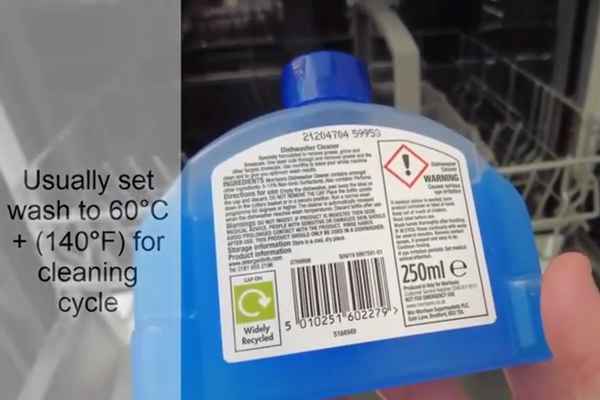
One area where alternative sanitizing methods are particularly useful is in commercial dishwashers. These machines are essential for businesses that handle large volumes of dishes, but they can also be breeding grounds for bacteria if not cleaned properly. Using chemical disinfectants can be time-consuming and expensive, But there are other options available.
One popular method is using ozone technology, which involves injecting ozone gas into the dishwashers during the wash cycle. Ozone is a powerful oxidant that destroys bacteria and viruses on contact without leaving any harmful residue.
Best Practices To Prevent Future Buildup
Maintaining a commercial dishwasher is essential to ensure that it functions optimally and produces clean dishes every time. One of the most important aspects of upkeep is preventing future buildup. This can be achieved by adopting best practices that keep your machine in top condition. Here are a few tips to help you clean and maintain your commercial dishwashers.
First, make sure to scrape off food particles from your dishes before loading them into the machine. Not only does this prevent clogging, but it also improves the efficiency of the cleaning process. Secondly, use a good quality detergent that’s compatible with your dishwashers and follow manufacturer guidelines for dosage. Too much detergent can cause sudsing while too little may result in poorly cleaned dishes.
Thirdly, regularly inspect and clean the interior components of your dishwashers such as spray arms, filters, and nozzles.
The Benefit Of A Commercial Dishwasher Clean
A clean commercial dishwasher can have numerous benefits for your business. First and foremost, it ensures that your dishes are being washed effectively and hygienically. A dirty machine can leave behind food particles, grease, and bacteria on your plates and utensils – putting your customers’ health at risk.
In addition to hygiene benefits, a clean commercial dishwasher also helps extend the lifespan of the machine itself. By removing buildup from hard water deposits or leftover detergent residue, you can prevent rusting or other forms of corrosion that could lead to expensive repairs or replacements down the line.
Discover how to clean your dishwasher drain hose quickly and easily with our simple step-by-step guide. Get the cleanest results with minimal effort!
The Final Thoughts
Maintaining a commercial dishwasher is an important part of running an efficient kitchen. It is essential to keep these appliances clean and maintained to ensure safe and sanitary dishware. Taking the time to regularly deep clean a commercial dishwasher will help reduce bacteria, odors, and clogs. Chemical cleaning products are especially effective for this process, but it is important to use them with caution. Regular maintenance will also help avoid costly repairs or replacements due to damaged parts.
